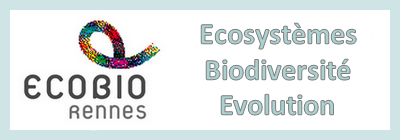Species- and organ-specific responses of agri-environmental plants to residual agricultural pollutants
Résumé
Soil pollution by anthropogenic chemicals is a major concern for sustainability of crop production and of ecosystem functions mediated by natural plant biodiversity. The complex effects on plants are however difficult to apprehend. Plant communities of field margins, vegetative filter strips or rotational fallows are confronted with agricultural pollutants through residual soil contamination and/or through drift, run-off and leaching events that result from chemical applications. Exposure to xenobiotics and heavy metals causes biochemical, physiological and developmental effects. However, the range of doses, modalities of exposure, metabolization of contaminants into derived xenobiotics, and combinations of contaminants result in variable and multi-level effects. Understanding these complex plant-pollutant interactions cannot directly rely on toxicological or agronomical approaches that focus on the effects of field-rate pesticide applications. It must take into account exposure at root level, sublethal concentrations of bioactive compounds and functional biodiversity of the plant species that are affected. The present study deals with agri-environmental plant species of field margins, vegetative filter strips or rotational fallows in European agricultural landscapes. Root and shoot physiological and growth responses were compared under controlled conditions that were optimally adjusted for each plant species. Contrasted responses of growth inhibition, no adverse effect or growth enhancement depended on species, organ and nature of contaminant. However, all of the agricultural contaminants under study (pesticides, pesticide metabolites, heavy metals, polycyclic aromatic hydrocarbons) had significant effects under conditions of sublethal exposure on at least some of the plant species. The fungicide tebuconazole and polycyclic aromatic hydrocarbon fluoranthene, which gave highest levels of responses, induced both activation or inhibition effects, in different plant species or in different organs of the same plant species. These complex effects are discussed in terms of dynamics of agri-environmental plants and of ecological consequences of differential root-shoot growth under conditions of soil contamination. © 2019 Elsevier B.V.
Origine : Fichiers produits par l'(les) auteur(s)



